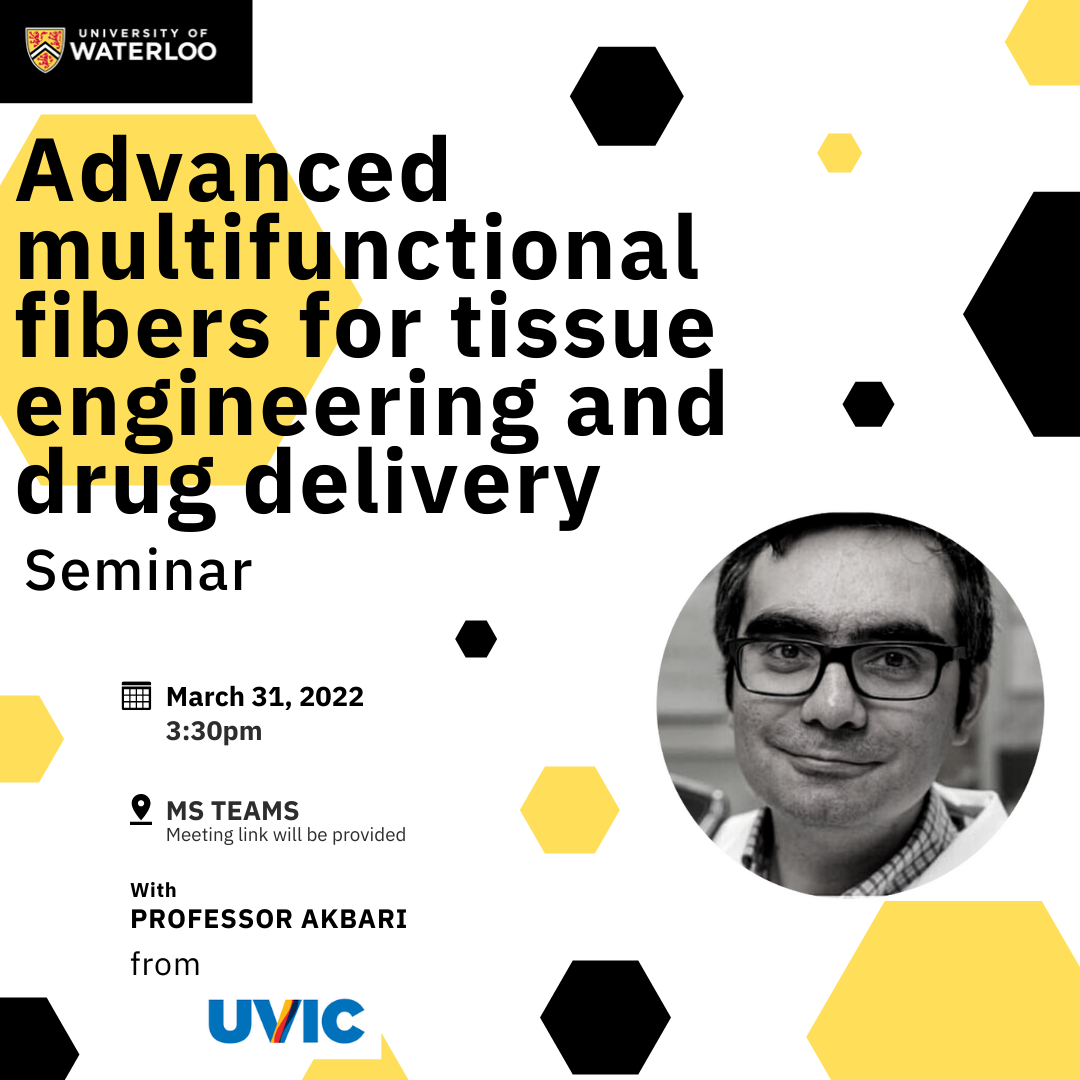The
Chemical
Engineering
Department
is
hosting
a
special
graduate
lecture
about
advanced
multifunctional
fibers
for
tissue
engineering
and
drug
delivery.

Biographical Sketch
Dr. Mohsen Akbari is an Associate Professor of Mechanical Engineering, the Director of the Laboratory for Innovations in Microengineering (LiME) at the University of Victoria, and an Affiliated Associate Professor at the School of Biomedical Engineering at the University of British Columbia. In addition to his professorship, he is a member of the Center for Advanced Materials and Related Technologies (CAMTEC), member of Center for Biomedical Research (CBR), investigator at International Collaboration on Repair Discoveries (ICORD), Associate Member of Djavad Mowafaghian Centre for Brain Health and the co-founder and Chief Scientific Officer at 4M Biotech. Dr. Akbari obtained his Ph.D. from Simon Fraser University and received postdoctoral training at Harvard Medical School and Brigham and Women’s Hospital. He is the recipient of several awards, including the Faculty of Engineering Teaching Excellence Award, Michael Smith Foundation for Health Research Idea to Commercialization Award, NSERC Postdoctoral Fellowship Award, BC Innovation Council Research Award, Kaiser Foundation Award, and recognized as a Canadian Rising Star in Global Health by Grand Challenges Canada. He is a Guest Editor of Micromachines and Gels and a member of the Board of Directors of the Canadian Biomaterials Society. His research findings have been published in 90 peer-reviewed journal papers and book chapters with an h-index of 35 and over 6100 citations. His work has also been featured on the cover of 11 Journals and reported in media such as CBC News, Time Colonist, BBC News, Google News, Science Daily, The Telegraph, and Fortune.
Abstract
Fibers are 1D materials that are flexible and can be formed into literally any shape using well-established textile methods or 3D printing. Fiber-shapes constructs with high anisotropic mechanical and chemical properties that are similar to those observed in native tissues. Fibers with diameters ranging from tens to hundreds of micrometers can be embroidered into tissues with minimum damage to the tissue for measuring biological markers or releasing drugs directly to the disease site. In my talk, I will present my group’s recent effort in producing advanced multifunctional fibers for use in tissue engineering and drug delivery.